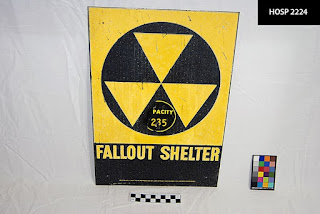Some cultural observers show disdain for teenagers using smartphones during family dinner or for couples checking messages during a date. Their thesis is that people should always give priority to in-person communication. While I generally agree, I think such decisions should be more nuanced – on some occasions, electronic communication may be better.
Every Generation Used the Facebook of Their Day
Even before Facebook and smartphones, people did not solely communicate face-to-face. For as long as people have dispersed beyond the range of hearing, humans have used technological tools to continue conversing. Faced with separation, clever people have invented communication technology to serve as a proxy for face-to-face conversation.
Go back one generation. When my mother was young, she responded to a call for pen pals in The Banner, the denominational magazine of her church. The magazine was setting up a network of “Banner Pals”, connecting young people from the Christian Reformed Church with others who wanted to make new friends. My mom, Marianne, was 10 or 11, living in Grand Rapids, Michigan. She was paired with Joanne, a girl who lived in Monroe, Washington. They wrote back and forth for some time, sharing little details of their lives. In those days, long-distance phone calls were costly and thus rare, so letters were the only economical way for children to communicate regularly over a distance.Go back another generation. My paternal grandparents were married not long after World War II. My grandfather was a returning GI, having served in the Pacific theater, including time as one of the first soldiers on the front lines to operate the new technology of radar. The wedding was in the hometown of my grandmother: Bozeman, Montana. But my grandfather’s family was 1,300 miles away in Racine, Wisconsin. To ensure their congratulatory message was received on the day of the ceremony, my grandfather’s family in Racine used the asynchronous messaging medium of the day: a Western Union telegram.
The telegraph was not new at that time. We must go back three more generations to the time the first telegraph message was sent by Samuel Morse in 1844. The telegram was sent from Washington D.C. to Baltimore. The operator at the far end translated the dots and dashes of Morse Code to reveal the message “What hath God Wrought.”
Morse invented the telegraph in response to grief. While he was away on a trip, his wife fell ill. Letters about the severity of her sickness reached him too late; he was not able to return in time for her funeral. As he mourned her loss, he dreamed of a means of rapid communication over a distance, leading to his invention of the telegraph.
New technologies do not always replace old technologies, and even when they do, there can be considerable overlap. The last telegram was sent in India on July 14, 2013. During the 169 years from Morse’s first message until this last Indian missive, the telegraph would be outpaced by the telephone, radio, television, cellular phones, text messages, and Internet communication services such as email, web video conferencing, and instant messaging.
Go back one hundred generations. In ancient Greece, the philosopher Plato imagined a conversation with the inventor of letters (and thus written communication), but saw its dark side: “this discovery of yours will create forgetfulness in the learners' souls, because they will not use their memories; they will trust to the external written characters and not remember of themselves.” (Plato, Phaedrus) It was true – verbal accounts faded. Civilization likely predates writing, but it is pre-historic and largely unknown. The only ancient cultural insights and historical events known today are because they were written down. For example, the Biblical stories – from Adam and Eve through the near destruction of humankind save Noah and his family – all of this was passed down through oral tradition until Moses wrote them down in the Pentateuch.
Technology has been used to communicate over time and distance for all of human recorded history. Rather than disdaining it, let’s discern some principles for redeeming it.
Redeeming Technological Communication
All good gifts in nature and culture have their roots in the good creation. Jellyfish, mountain peaks, the spray of an ocean wave, music, arboriculture, legislation, calculus, poetry, medicine, and chemistry – all good gifts from our Creator. Each is also tainted by sin, but by God’s grace can still provide benefit. From the beginning God called all humans to steward these gifts, i.e., to develop and cultivate them. Today, God also calls Christians to redeem them. Let’s consider some principles that could guide our use of the good gifts of communication technology.
Principle 1: Do not unthinkingly use tech to communicate
The content of the communication is affected by the tools we use, as McLuhan famously quipped, “the medium is the message." We should have a strong preference for in-person communication. If sent electronically, many messages would lose meaning. Physical presence is important for messages such as a hug of comfort, a good-natured slap on the back for good work, or freshly picked flowers delivered in person as a token of apology. Many spiritual practices and sacraments are best done in person. Showing love in fellowship, providing acts of service and care, discipling and teaching, partaking in the Lord’s Supper, congregational singing in worship – these are all best done together, in person.
If in-person communication is usually better, then electronic messages are a poor substitute in many situations. If we choose the medium of email to break up with someone we have been dating, this shows disrespect and lack of care. Difficult conversations like this ought not to be minimized. If we intentionally choose a less intimate medium for the message, we are evading our responsibilities. Likewise, choosing email to fire an employee sends a message of arrogance, indifference, and discourtesy. If we intentionally choose a less personal medium for our message, it does not convey strength. It conveys a lack of courage and shirking of responsibility.
One of the reasons that communication over distance can be disrespectful or uncaring is that humans are made in the image of God. They are worthy of our time and care. Making an effort to communicate in a more personal setting shows our care for our fellow image-bearers. Communicating remotely over a distance can feel remote and distant.
We ought not unthinkingly or habitually choose technology as our default means of communication. However, there are times we might rightly choose to communicate via technology, which is where the remaining three principles come into play.
Principle 2: Recognize limitations in tech communication
When messaging, we sometimes use a sideways smiley face :-) in text-based mediums or a smiley face emoji in instant messages. We do so because we recognize the lack of body-language signals that would help our recipient recognize our tone. We want to be sure the receiver understands the nuance of our message, so we add a visual hint.
Even when communicating in person, what we mean is not necessarily what is heard. Our words can be misunderstood or misinterpreted. Communicating to be understood requires careful thought about the environment (e..g, speaking louder in a noisy room) and the listener (e.g., using the right tone and clear language). Knowing the listener is important. For instance, if the listener is a musician, then musical examples may convey a concept effectively. Feedback is important to gauge understanding. A head nod of agreement versus a quizzical look from the listener can help direct the next stage of the conversation.
Similarly for communication that is not in person, what we mean is not necessarily what is heard. Communicating to be understood requires careful choice of medium. My work colleagues have distinct preferences for communication mediums. Some prefer e-mail, others want a video call, and others like instant messaging.
Once a medium is selected, creative use of that medium can enhance understanding. For instance, in a video call, if the discussion refers to a website with a long URL, pasting the URL in the chat can help ensure listeners can follow along. Listeners without their own video feeds can give feedback to the speaker through the use of reactions that are displayed as the visual equivalent of a head nod in agreement.
When we choose to communicate with tech, we ought to thoughtfully consider its limitations and address them where we can. When we are able to achieve effective and affective communication despite the limitations, we can then achieve some noble and God-honoring ends, such as those the final two principles suggest.
Principle 3: Use tech to communicate with respect and convey worth
It is not always better to choose live, in-person communication. Business meetings that simply convey information with no interaction and little flair are often so boring that they show a lack of respect for those that were forced to attend. That meeting truly should have been an email. Similarly, too much information in one verbal deluge might be difficult to process or remember. Putting it in writing will convey the meaning better and sustain the impact longer.
Sometimes live, real-time communication is preferred, but not absolutely. For example, when there is a death in the family, the caring medium to communicate this somber news to close relatives is in person. However, if you cannot get immediately in touch, time is of the essence. Making a phone call is better than leaving them without knowing. If they don’t pick up, then leaving a voicemail or sending an email may be better than waiting too long. These choices hinge on respect – those impacted the most should hear important news first. Important family news should be shared first with the immediate family, Likewise, important business reorganizations should be shared first with those that are being shuffled in the new organization. The need for promptness influences the medium we select for the message. Respect for the message recipient may require us to balance intimacy and immediacy.
The spiritual practices and sacraments mentioned earlier are best done in person, but in extraordinary circumstances, technology may allow those practices to continue when doing so in person is not possible. Illness may prevent individuals from gathering. When I have the flu, I show respect and care for my fellow believers by staying home from Sunday services and watching online instead. War or pandemics may prevent entire communities from gathering. COVID caused many congregations to temporarily meet online. A blizzard on Christmas weekend caused my church to cancel services in person, proceeding online instead.
Tech gadgets help parents stay in touch with children who are studying or working in distant locations. They help spouses connect when one is away on a business trip or called to active military service. They help siblings catch up on each other’s lives when living in different states. Even when they are far away, staying in touch with loved ones and friends may take precedence over strangers nearby. Sitting outside during lunch break, you might forgo a conversation with a person you don’t know who is sitting across the walk. Why? To make a check-in call with your wife to see how an important event that morning went for her. While having family dinner, you might respond to an urgent text from your best friend, temporarily stepping away from those present in the room. Rather than attending a local sporting event, you might choose to watch your granddaughter's soccer game in another state, watching via Facetime.
Thoughtful choice of communication medium demonstrates caring and respect. Before unthinkingly selecting your habitual means to communicate, take a moment to consider the message and the audience, then choose your medium wisely. One particularly meaningful demonstration of respect is when technology also enables others to flourish in their communication, which is the focus of the final principle.
Principle 4: Use tech to give people a voice
New means of communication can provide new opportunities. Although e-mail is now old, and Facebook is no longer new, consider what a director at Intel Corp. observed as each technology became prevalent: “I have so many stories of people reflecting on the ways technology gave their parents voices they didn’t know they had. I remember years ago, people -- mostly 20-,30-, and even 40-somethings -- reflecting on the fact that when e-mail and text-messaging came along, they suddenly heard their father in a way he’d never been before. It gave a generation of taciturn men a way to have affective relationships across their families. I still hear that about the way people are connecting on Facebook.” (Genevieve Bell, Director of Interaction and Experience Research for Intel Corporation, in an interview with Alexis Marigal in “What Makes Her Click,” The Atlantic, December 2012, p. 42.) Bell noticed that technology gave a voice – a means of expression – to family men that they didn’t have previously.
Giving someone a voice means granting them access and the means to participate. Technology can be a tool to give voice to the oppressed and disenfranchised. Tech can enable us to hear the plight of the hungry, destitute, or war-torn. Technology can give voice to professionals whose company cannot afford the travel expense to send them to a conference in person – if the conference provides a virtual option, they can now share their insights with other experts in their field.
I have experienced this gaining of voice personally. I had early onset loss of hearing, starting before I was 40. I figuratively lost my voice as well as my hearing. When I could not distinguish what other speakers were saying, I could not participate in the discussion. The technology of hearing aids remediated my hearing to a large degree, giving back my ability to participate in conversations – giving me back my voice.However, the technology is not perfect. Even with hearing aids, I can have trouble distinguishing the words of a soft-spoken person on the other side of a room. When I served as an elder on my church council, there was another elder who was very quiet, but often spoke with great insight during meetings. I intentionally would find a seat near him to be sure I could hear his words during the meeting. Unfortunately, he wasn’t the only quiet voice, and sometimes the HVAC or other peripheral noises would make even loud voices hard to make out. Keeping up with the discussion was mentally exhausting and could be frustrating at times. When COVID hit, our council moved to web-based video conferences. Suddenly I could hear every speaker! With each person sitting in front of a microphone and with my own volume control, I could finally hear every person, even the quiet ones.
Just as children in school have different learning styles and just as children and adults have diverse talents for expression, we all have different communication styles and needs. When done well, technology can help level the playing field so that all can participate and all have a voice.
Conclusion
In high school, my shop teacher would tell us “choose the right tool for the job.” Although he was referring to the power woodworking tools we were about to employ, his insight applies to tools for communication just as well. For each message and in each conversation, choose the means of communication that best loves your neighbor and honors God. Choose tools not for self-aggrandizement, but for how well they enable respect of others, by whether the tool grants them a voice and enables us to truly hear the heart of the matter from their perspective.







.jpeg)












